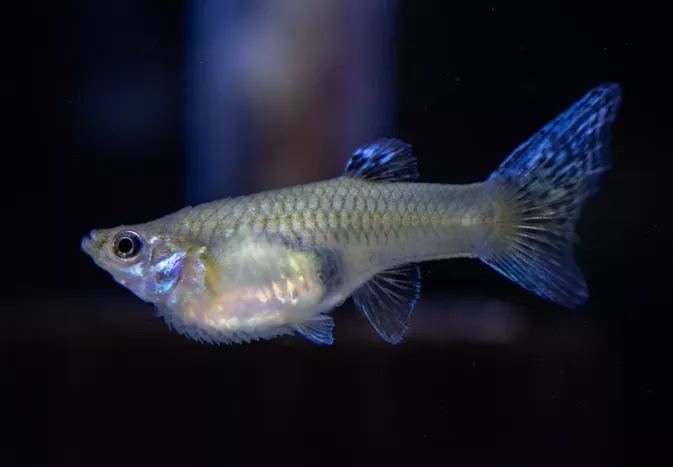Dropsy in Fish: Signs and Treatment
Updated on 04/26/24

Dropsy in Fish: Unveiling the Signs, Causes, and Treatment Options
Introduction
Dropsy, also known as fluid retention or bloat, is a common health condition affecting both freshwater and saltwater fish species. It manifests as an abnormal buildup of fluid in the body cavity and tissues, leading to the appearance of a swollen, distended abdomen. While dropsy is a prevalent issue in aquariums, it can be effectively treated if detected and addressed promptly. This comprehensive guide will delve into the signs, causes, and treatment methods for dropsy in fish, empowering aquarists with the knowledge to restore their aquatic companions to optimal health.
Signs and Symptoms of Dropsy in Fish
Dropsy is characterized by a constellation of symptoms that can vary in severity. Some of the most common signs include:
* Swollen Abdomen: An enlarged, distended abdomen is the hallmark sign of dropsy. The fish's belly may appear bloated and filled with fluid, giving it a "pinecone" shape.
* Ascites: Accumulation of fluid in the abdominal cavity is known as ascites. This excess fluid can compress the fish's internal organs, causing discomfort and respiratory distress.
* Skin Lesions: Red, swollen, or ulcerated skin lesions may accompany dropsy. These lesions can indicate underlying bacterial infections or skin irritation caused by the fluid accumulation.
* Scales Protruding: In advanced cases, the scales may protrude outwards as the fluid pressure mounts beneath the skin.
* Lethargy and Loss of Appetite: Dropsy can cause lethargy, weakness, and a loss of appetite as the fish struggles with the discomfort and organ dysfunction.
* Popeye: Bulging eyes or popeye can also be a sign of dropsy when accompanied by other symptoms.
Causes of Dropsy in Fish
The underlying causes of dropsy in fish can be varied and complex. However, the most common culprits include:
* Bacterial Infections: Bacteria such as Aeromonas and Pseudomonas can cause dropsy by infecting the fish's internal organs or skin, leading to fluid accumulation and inflammation.
* Viral Infections: Viral infections, including the Koi herpesvirus (KHV) and infectious pancreatic necrosis virus (IPNV), can also cause dropsy as part of their systemic effects on the fish's body.
* Organ Dysfunction: Diseases affecting the kidneys, liver, or heart can impair the body's ability to regulate fluid balance, resulting in dropsy.
* Parasitic Infections: Parasitic infections, such as those caused by flukes and gill worms, can damage the fish's tissues and contribute to fluid accumulation.
* Environmental Factors: Poor water quality, including high levels of ammonia, nitrites, and nitrates, can stress the fish and make them more susceptible to dropsy.
Treating Dropsy in Fish
The treatment for dropsy will depend on the underlying cause. However, some general steps can be taken to address the condition:
* Isolate the Infected Fish: To prevent the spread of infection, remove the affected fish from the main tank and place it in a quarantine tank.
* Improve Water Quality: Ensure the water quality in both the quarantine and main tank is optimal by regularly testing and performing water changes.
* Antibiotics: If bacterial infection is suspected, antibiotics such as erythromycin or oxytetracycline can be used to combat the pathogens.
* Antiviral Medications: In cases of viral infections, antiviral medications may be prescribed by a veterinarian to manage the viral load and alleviate symptoms.
* Diuretics: Diuretics, such as Epsom salt or spironolactone, can help reduce fluid retention by promoting urination.
* Surgery: In advanced cases, surgery may be necessary to drain the excess fluid from the fish's abdomen.
Examples of Dropsy Treatment
* Bacterial Dropsy: Treatment typically involves antibiotics such as erythromycin or oxytetracycline, along with water quality improvements and supportive care.
* Viral Dropsy: There is no specific antiviral treatment for viral dropsy. Supportive care, including water quality management and anti-inflammatory medications, can help alleviate symptoms.
* Kidney Failure: In cases of kidney failure, diuretics may be used to reduce fluid retention, along with medications to manage blood pressure and electrolyte balance.
Prevention of Dropsy in Fish
Preventing dropsy in fish requires a combination of good husbandry practices and disease management:
* Maintain Optimal Water Quality: Regularly test and adjust water parameters to keep ammonia, nitrites, and nitrates at safe levels.
* Feed a Nutritious Diet: Provide a balanced diet that meets the nutritional needs of your fish and supports their immune system.
* Quarantine New Fish: Introduce new fish to your tank gradually through a quarantine period to avoid introducing pathogens.
* Regularly Inspect Fish: Observe your fish daily for any signs of illness, including dropsy.
* Vaccinate Fish: Vaccinations can help protect your fish from specific viral infections, such as KHV.
Conclusion
Dropsy in fish is a serious condition that can affect both freshwater and saltwater species. By understanding the signs, causes, and treatment options, aquarists can effectively manage and prevent this common health issue. Remember, early detection and prompt intervention are crucial for maximizing the chances of successful treatment and restoring your aquatic companions to optimal health. By following the guidelines outlined in this comprehensive guide, you can provide your fish with the best possible care and ensure their well-being for years to come.
Explore More Pets

Freshwater Aquarium Filters
How to Deal With Cloudy Aquarium Water

Saltwater Aquarium Filters
How Do You Remove Chloramines From Tap Water?

Freshwater Aquariums & Habitat
Can I Keep My Koi Fish Inside?

Saltwater Aquariums & Habitat
14 Best Floating Plants for Your Aquarium

Freshwater Fish Health
How to Treat Ich on Freshwater Fish

Saltwater Fish Health
Fin Rot in Aquarium Fish

Freshwater Aquarium Filters
How to Do Aquarium Water Changes

Saltwater Fish Health
How Do Fish Get Parasites?